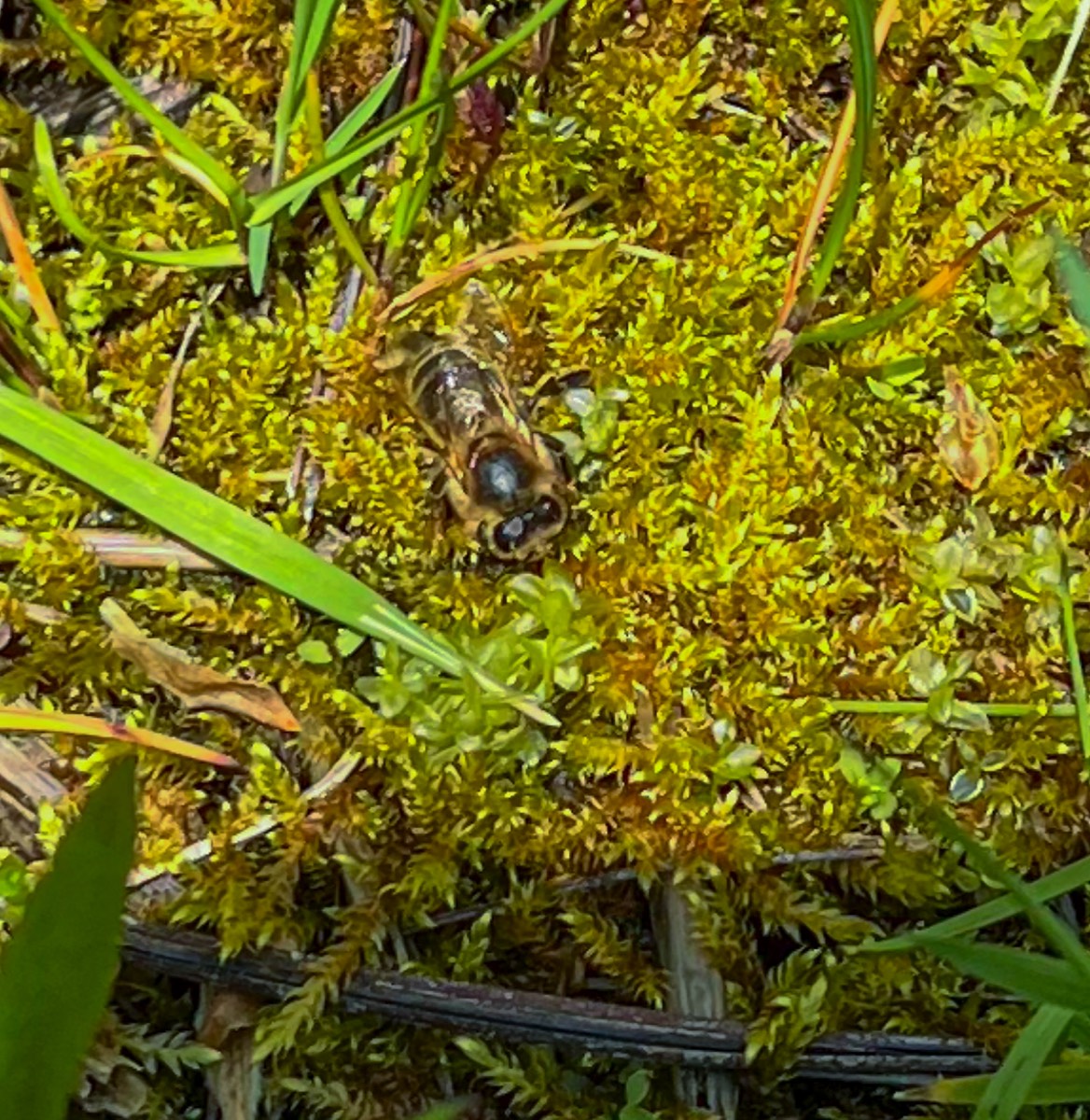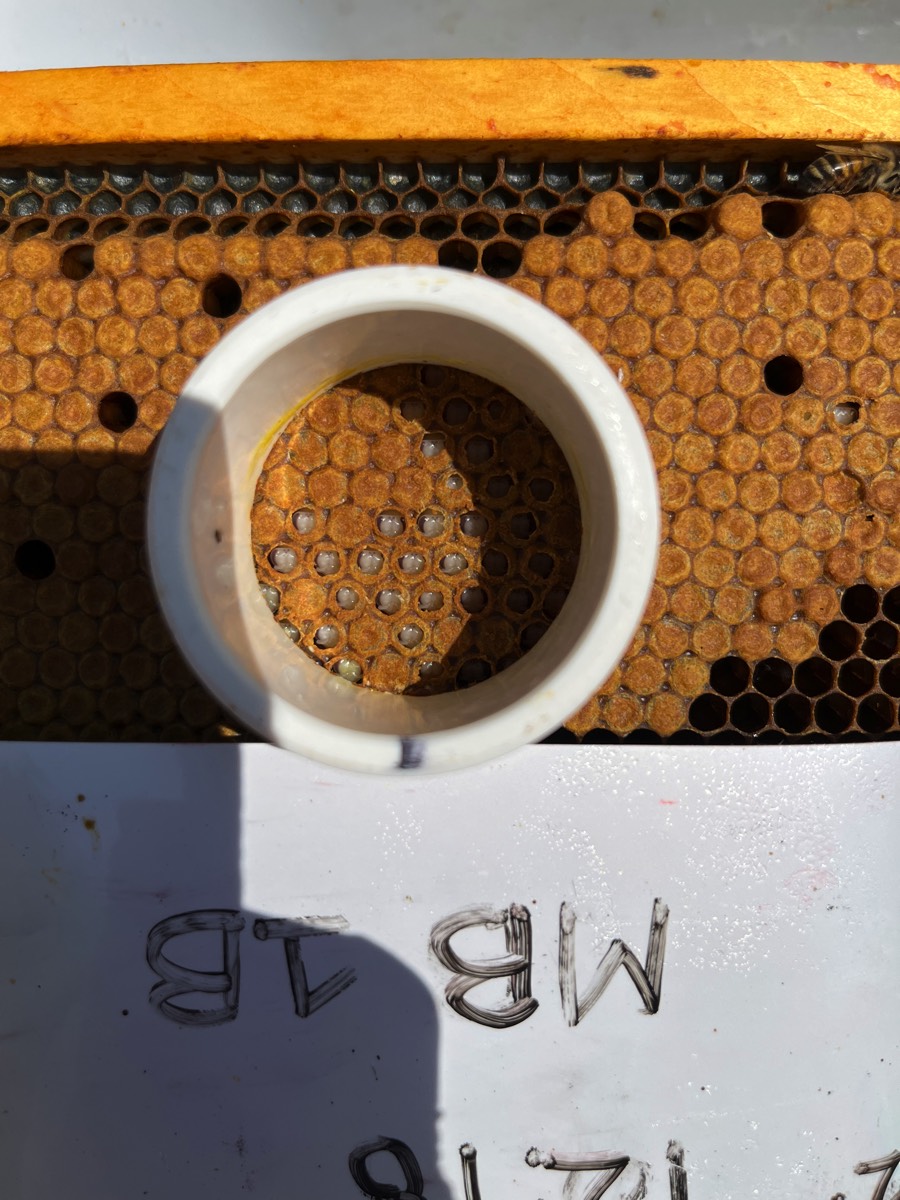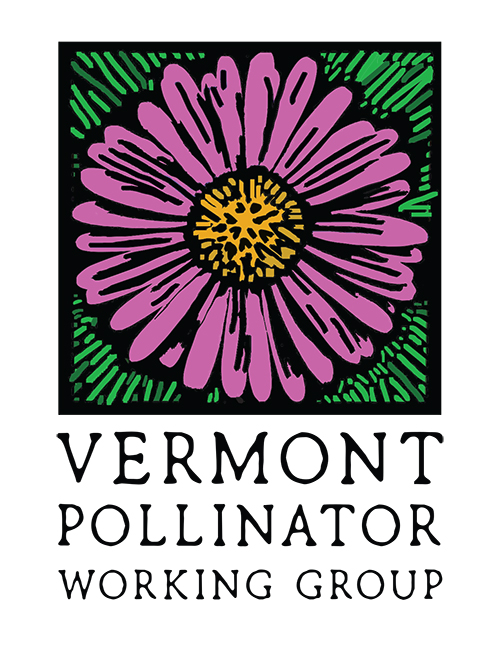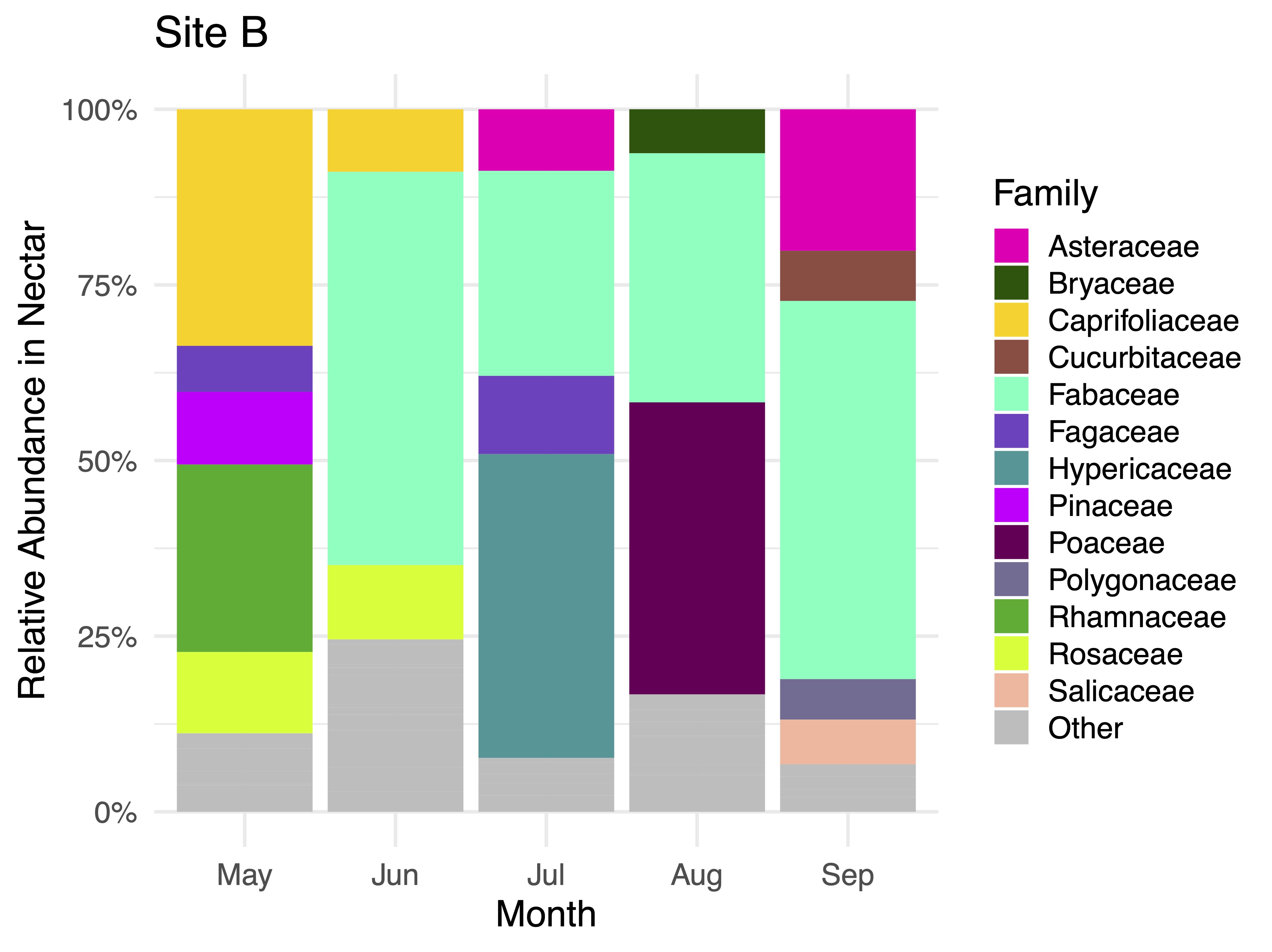Ongoing Projects
Evidence revealing interactions between honeybees and non-flowering plants
Do honeybees visit ferns and mosses like they do flowers? We discovered Bryaceae (moss) and Osmundaceae (fern) spores in bee pollen and nectar, indicating that bees collect spores during their foraging trips. Spores are part of the reproductive cycle of non-flowering plants, like ferns and mosses, and are dispersed passively via wind and water. We are partnering with plant biologist Dr. Niki Patel at Trinity College to investigate the mode of spore collection by bees and its ecological significance for non-flowering plant communities. Our preliminary findings suggest that honeybees may play a larger role in spore dispersal than previously thought!

Unhealthy Brood Odor (UBeeO)-quantified hygienic behavior and its interaction with Nosema ceranae
Hygienic behavior in honey bees has been previously characterized as a method of combatting brood disease. However, using UBeeO to quantify hygienic behavior, we find that high-scoring colonies have reduced Nosema spp. loads over time. Nosema is known to be an exclusively adult bee disease and is typically not associated with hygienic behavior. Therefore, we are conducting a series of laboratory and field experiments to better understand the mechanism of Nosema ceranae. resistance posed by high-scoring UBeeO colonies at the individual and social level of immune function. This research will be pivotal in advancing our understanding of how UBeeO assays can predict disease loads, including those of brood and adult bees, and the resistance mechanisms at work in the colony.

Vermont Pollinator Working Group
The Vermont Pollinator Working Group is a consortium of organizations and businesses working together on projects to tackle urgent threats to bees and other pollinators in Vermont and the Northeast.
This project was supported by the UVM Gund Apis Award with matching funds from the One Hive Foundation.

A Partnership for Improving Northeast Honey Bee Breeding Stock by Implementing Novel Selection Criteria
One mechanism whereby beekeepers can mitigate colony losses is through selective breeding programs that select for stock well-adapted to local environments and pest/pathogen resistance. To strengthen the quality and availability of locally adapted bee stock, we are engaged in a collaborative initiative that brings together bee breeding operations in Vermont with the expertise and resources of bee disease experts at the Vermont Bee Lab.

Pesticide Residue Monitoring
In 2021, we began monitoring pesticide residues in bee collected pollen. This work has expanded into a citizen science project with beekeepers throughout Vermont to understand pesticide exposure to honey bee colonies.

National Honey Bee Survey
The National Honey Bee Survey (NHBS) represents a nationwide colony inspection program which gathers longitudinal data on US honey bee health. Data collected by NHBS provides a baseline for honey bee disease levels, valuable to beekeepers and researchers. Since 2009, the survey has detected existing pest and disease loads across all US states and is monitoring for the emergence of other invasive organisms such as Apis cerana and Tropilaelaps spp. mites. Colonies are also tested for pesticide residues to assess the variety and quantity found in the wax, bee bread, and pollen of US hives. The Vermont Bee Lab serves as a proxy for conducting these surveys in Vermont. We visit 24 apiaries throughout the honey season, collecting composite samples of live/dead bees and hive materials to be sent for laboratory analysis. Funding from the USDA Animal Plant Health Inspection Service (APHIS) helps to support the project in collaboration with the University of Maryland (UMD), USDA Agricultural Research Service (ARS), and State Apiary Specialists.

Understanding Bee Forage Resources in Vermont
This study (led by Brianna Borch) aims to identify which plant sources honey bees in Vermont are relying on for nectar and pollen throughout the growing season (May through September). By understanding which plants bees are utilizing and when, more educated land use decisions can be made in order to protect and promote these important floral resources to support honey bee health as well as improve honey yields for beekeepers and support local agriculture. Furthermore, understanding which plant species contribute to single-plant honey varietals could help bolster marketing initiatives for local Vermont honey.
